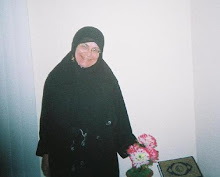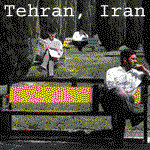'Gladiator' tomb discovered in Italy
The tomb of a general thought to have been an inspiration for the main character in the Oscar-winning film Gladiator has been unearthed in Rome.
Rome-The tomb of Marcus Nonius Macrinus is one of a number of recent archaeological discoveries in the city.
Marcus Nonius Macrinus was a favourite of Emperor Marcus Aurelius, helping him achieve major victories in Europe.
 He is believed to have in part inspired the character Maximus Decimus Meridius, played by Russell Crowe in Gladiator.
He is believed to have in part inspired the character Maximus Decimus Meridius, played by Russell Crowe in Gladiator.But although the film character is also a favourite of Marcus Aurelius and goes into battles with him in the late 2nd century AD, that is where the similarities end. The real Roman general is not believed to have been sold into slavery only to return to Rome as a vengeful gladiator.
'Huge' tomb
The tomb was discovered along the northbound Via Flaminia where construction work has been taking place. Many marble columns, inscriptions and decorations have been beautifully preserved thanks to the mud caused by a centuries-old flood of the River Tiber.

Archaeologists are continuing work on the site
It is "the most important ancient Roman monument to come to light for 20 or 30 years", said senior archaeologist Daniela Rossi.
More than 10 inscriptions on the tomb detail the life of Marcus Nonius Macrinus. They show he came from Brescia in northern Italy, was a police commissioner, magistrate, pro-consul of Asia and close confidante of Emperor Marcus Aurelius, who wanted him to fight in the wars against Germanic tribes in northern Europe.
"The movie character played by Russell Crowe leaves for and participates in these wars and is an intimate friend of Marcus Aurelius, chronologically we are in the same period and the war is the same, but the movie character has a very sad story and comes to a terrible end while ours becomes a rich and famous man," said Professor Rossi.
Much of the tomb remains buried in mud, and Professor Rossi said archaeologists were working around the clock to unearth the rest of it.
"Perhaps we will also find the sarcophagus. It's also too early to say how big it is, but it appears there was a row of columns at least 15m long, so it was quite huge," he said.
The tomb is one of a number of recent archaeological discoveries in Rome.
Workers renovating a rugby stadium have uncovered a vast complex of tombs that mimic the houses, blocks and streets of a real city, the Associated Press news agency reports.
Meanwhile, archaeologists restoring imperial residences in the heart of ancient Rome are also reported to have found what they believe to be the underground passageway where the Emperor Caligula was murdered by his guards, the AP also reports.
Labels: Archaeology, Entertainment, History, Human Interest, italy















0 Comments:
Post a Comment
<< Home